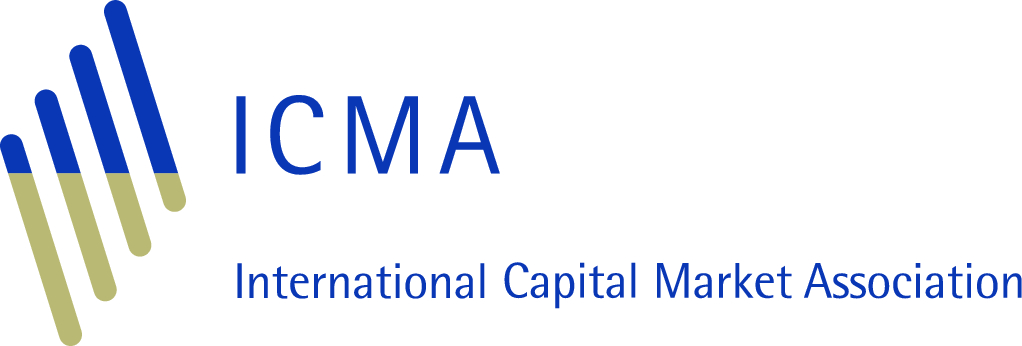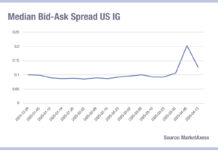Several buy-side traders report new primary bond market tools could come online this year in the US, with dealer consortium DirectBooks expected to step up, Bloomberg updating New Issue Monitor (NIMY) and IHS Markit announcing a new tie-up with NetRoadshow.
This could not come sooner for many traders who are facing a primary market tsunami, with global new bond issuance in the first quarter of 2020 totalling US$1.9 trillion, up 6.4% on Q1 2019, according to S&P Global Ratings.

Mark Betteridge, global head of Fixed Income and Currency Analytics at Bloomberg, says, “Record issuance and the current work-from-home environment reinforces the need for more efficient workflows on the buy side.”
The European Central Bank (ECB) €750 billion Pandemic Emergency Purchase Programme (PEPP) announced on 18 March, expanded by €600 million on 4 June, and the Federal Reserve’s 23 March announcement of borrowing programmes that combined will total US$2.3 trillion, have been big drivers of new bond issues, supported by historically low interest rates. Both rates and borrowing measures are responses to the economic disruption of COVID-19 and a trade war in oil.
Correlation between the programmes and issuer action is close; S&P Global Ratings observed that after the initial Fed announcement in March the last seven business days of the month saw “more than US$152 billion in investment-grade corporate bond issuance—higher than all but two prior months’ totals”. March’s total investment-grade corporate issuance was US$249 billion.
 The International Capital Markets Association (ICMA) noted in a recent paper that in Europe, “New issuance from corporates had pretty much dried up completely in the first half of March, save for some limited bank issuance. However, the second half of March saw a flood of new issues coming to market that made for a record month for 2020, and that continued into early April.”
The International Capital Markets Association (ICMA) noted in a recent paper that in Europe, “New issuance from corporates had pretty much dried up completely in the first half of March, save for some limited bank issuance. However, the second half of March saw a flood of new issues coming to market that made for a record month for 2020, and that continued into early April.”
ICMA noted that firms it spoke with said this was helpful for overall market liquidity for several reasons:
• In the sharp retracement that followed March 18 as investors scrambled for paper, [primary] supply helped to satisfy much of that pent-up demand.
• Secondly, while much of the new issuance came to market at what were clearly deep concessions, it did help to provide a point of reference for secondary valuations. While ordinarily the secondary market is used as the reference point for pricing new deals, secondary liquidity had become so stretched at this time that this dynamic was actually reversed.
• Thirdly, the majority of secondary trading in any corporate bond takes place in the first few days following its issuance, which also helped to stimulate liquidity through switching activity against more seasoned bonds.
However, the record activity has been felt most by trading desks, who are charged with handling both primary and secondary market activity. The jump in issuance combined with a spike in secondary market activity in Q1 due to the massive sell-off in March across asset classes was a lot to handle.

“The primary market workload during March and April put a decent amount of stress on the ecosystem; my trading team, the analysts and the PMs were all extremely busy keeping up with the volume,” says Jamie Anderson, head of trading at Insight Investment. A straw poll of a dozen other heads of trading confirmed that managing primary market activity was their number one concern at present.
Heavy lifting
Currently, each new issue can be handled by multiple banks without any standard workflows. Buy-side traders interact with those banks, and their own firms’ portfolio managers who decide whether to invest. The amount of information that flows back and forth through this process is significant as PMs assess the value of the opportunity and banks build a book of interest.
Not only does the manual nature of this process make it slow, it increases the risk of errors as banks are correlating information on interest from multiple investment managers using text based communications.
“There was [a] significant risk of operational error on the Street side associated with this type of volume – we use IB chats to place and revise orders along with communicating the series of bonds needed post allocations and it takes a great deal of effort to make sure all these changes are seen and correctly reflected to syndicates,” says Anderson.
Bloomberg and IHS Markit already offer tools to make the process less manual, and both have had success in adoption on the buy- and sell-side. As issuance picked up this year both announced they were enhancing their existing tool sets.
“To help streamline the new issue analysis workflow for buy-side firms, Bloomberg has released updates to its New Issue Monitor (NIMY),” says Betteridge. “All new issuance is now displayed in one screen with new additional data points including bookstats and direct linking to the issuer curves, to allow for real-time tracking of initial price talks (IPT) and guidance and final pricing.”
IHS Markit’s partnership with NetRoadShow is intended to balance the demands of new issuers and investors, which IHS notes seek opposing positions on the offer price and to tackle market volatility.
Announcing the partnership, Gina Kashinsky, executive director in the Global Markets Group at IHS Markit, said, “To that end, by working with NetRoadshow, we are bringing primary markets up-to-the-minute investor activity data and analytics to render and support critical decision-making, such as allocations. We believe this information can drive the success of any deal and invite a robust pipeline of capital raising events for the broader investment community.”
Liquidnet had been planning an offering in the primary market space, however nothing public has been announced on that front, and there are unconfirmed rumours that the firm is currently up for sale.
Direct-to-dealer

The most exciting new development for traders may come from DirectBooks, led by CEO Richard Kerschner and driven by a consortium of the biggest bond dealers, including some users of IHS Markit, which is planning to launch its first tools this year.
“The Street’s desire for doing things the way that’s most convenient for them, prevented Bloomberg from getting much better than it has been,” noted one buy-side trader. “Now those firms have a vested interest in the DirectBooks product it will motivate then to agree on how to handle the inherent efficiencies – such as getting a uniform announcement of one bond deal instead of a different one from the three dealers involved.”
Although DirectBooks had expected to beta test with clients in Q1 2020 according to its website, no buyside firms contacted by The DESK had seen a product by the start of June 2020. Nevertheless, the word on the street is that tools will be announced this year.
“Richard and his team have been able to do something without help from the sell-side or the buy-side – there wasn’t going to be any help for the last three months – the end of the year is what has been communicated to some of us,” says one trader. “We haven’t seen anything and it will not be a cradle to grave solution at first. I’m sure it will be welcome but a lot of people will wish they had it three months ago.”
The functionality offered by DirectBooks looks exactly like that offered by Bloomberg and IHS Markit, but if it is more widely adopted by the big banks, could have a major effect on efficiency seen on trading desks today.
“There is a lot of inefficiency and operational risk being brought into the system with the large volume of new issues that will go away with the adoption of new automation products,” says Anderson. “I would say introducing automation to the new issue process is urgently needed in fixed income.”
©Markets Media Europe 2025

























